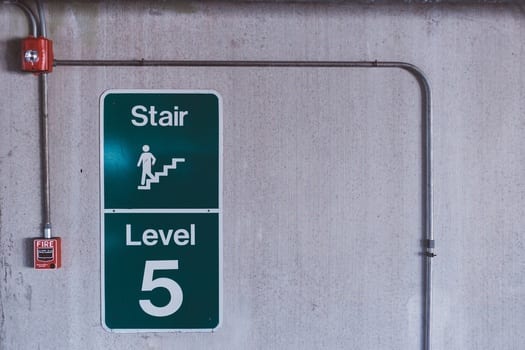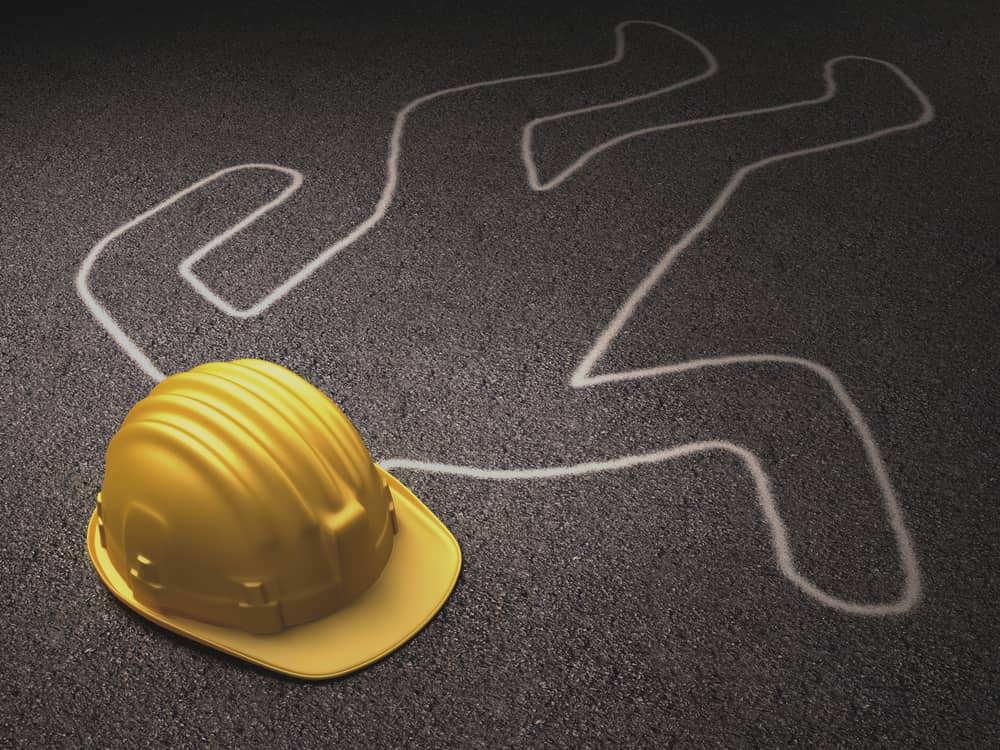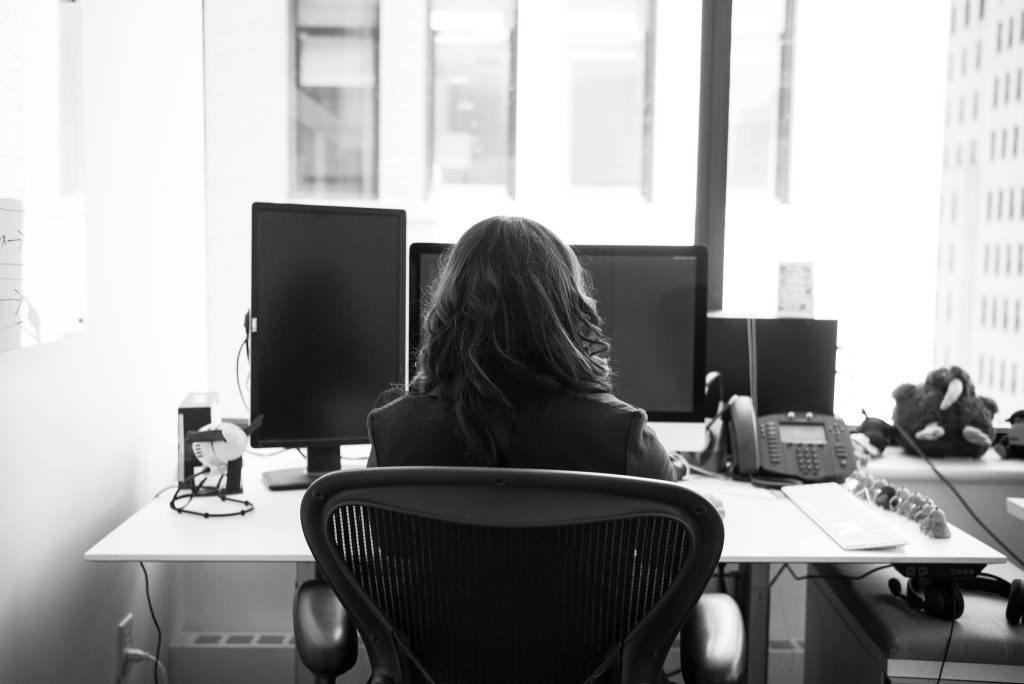Hazard Reporting in the Workplace

Hazard reporting is one of the main key’s to keeping a safe business. A hazard is anything with the potential to cause harm. Most times we are afraid to report safety concerns or issues in the workplace because we do not want to be seen as “busybodies”. We do not want to put others in trouble or we convince ourselves that it’s not our business. It is your business actually. Would you rather report a wrong action that could lead to an accident or allow the accident happen and let people get hurt? Reporting hazards could save your life. Who knows, you might be the victim of an unreported hazard. The effects of these hazards could either be immediate or occur over time. The employer/entrepreneur has a legal obligation to keep the workplace safe. However, as an employee, you are directly involved in the work process. You see the loose ends the boss may not see. Therefore, it is your duty to report shortcomings in the system. Some of us wrongly assume the employer knows about the situation already. Sadly, they do not always know and things could go wrong. There are four categories of hazards which can be found in the workplace, depending on the nature of the business: Physical hazards These are usually more common; faulty equipment, trailing cables, using wrong equipment for tasks, exposed moving parts of machine, spills and uneven floors. Biological hazards These could be from working with body fluid from humans or animals, bacteria and viruses. Chemical hazards This is exposure to various chemicals in a liquid, solid or gaseous state like gasoline, cleaning products or fumes. Ergonomic hazards These type of hazards occur in workplace conditions; poor lighting, poorly arranged workstations, bad lifting posture, wrong office furniture or repetitive tasks. We do not have to wait for accidents to happen before reporting. We should report unsafe acts and tasks or faulty equipment, because these are the components of future accidents. When we report hazards in the workplace, it help’s by: Creating an awareness of the situation Leading to solution creation Increasing staff involvement, as they also make suggestions to keep the work process safe Improving workplace safety Image credit: www.giphy.com www.google.com/images Do you have an efficient hazard reporting process in you workplace ? Let us know more about you and your story here.
Ugochi Obidiegwu: The Safety Chic

[bctt tweet=”I started reading about safety and I loved what I was discovering – Ugochi Obidiegwu” username=”SheLeadsAfrica”] It’s time for you to meet one of the people that make the SLA website run smoothly. We’re talking about our contributor family who SLAY with their writing. Ugochi Obidiegwu has a somewhat unusual passion; safety. She’s written articles on the importance of health and safety in start-ups, and has shared a bit on her experience with YALI. The main reason Ugochi does safety is simple; she does not want people to keep getting ill, injured, die or lose property due of their source of livelihood. This is the main reason Ugochi shows people how to be safer in everyday personal and business life. Get ready to be inspired by the Safety Chic! From the articles you’ve written for SLA, you’re clearly interested in safety. Where did this interest come about? I worked in a Nigerian airline as a cabin crew staff. One day in 2013, my boss informed me that I was now a safety officer. In addition to my original responsibilities, I was to work with another colleague to bring safety information and solutions to the Cabin Services Unit. My colleague and I decided we would launch monthly safety forums to share knowledge on safety issues affecting crew members, on and off the job. As someone, who believes in doing whatever I do very well, I started reading about it and I loved what I was discovering. But of course for you to be termed a competent person, you need sufficient knowledge, ability, training and experience. I embarked on certifications and volunteer work during my leave and off days on my bill. It wasn’t easy to give up vacation and other stuff but it was a necessary sacrifice. In the course of doing all these, I observed that it was mainly businesses in aviation, construction and oil and gas industries that took safety systems seriously. I decided to start a health and safety business that would provide tailored and affordable safety solutions for businesses, especially SMEs. A lot of SMEs I got in touch with thought accidents were beyond their purview. Therefore, I started a system of reorientation because I believed that gradually with more information, a safety consciousness would be awakened. I started writing on safety issues in a simpler format that the everyday person could relate to on my blog and later on SLA. At some point, my mentor Steve Harris suggested I make videos as not everyone might want to read. So, the idea of #60SecondsWithTheSafetyChic on Instagram and The Safety Chic came alive. #60SecondsWithTheSafetyChic is a weekly 60seconds or less video where content of blog articles is summarised. This way, my audience can have access to safety tips on the go. I have found that our generation, and people generally, are quite interested in an awesome quality of life, so anything that makes them able to live better is welcome. Do you ever see Nigerians taking safety seriously? Well, if you check, you’d find that the majority of Nigerians that are safety conscious either worked in organisations that do not joke with safety; or picked it up from friends and family members who worked there. Sometimes in an emergency, we want to help but do not know the right thing to do. It’s not really ingrained in us. Take for example, the use of seatbelts when driving in Nigeria. Until the Federal Road Service Corps (FRSC) put a fine to it, many people did not use their seatbelts. As a matter of fact, I had to explain to someone recently the importance of seat belt usage. He felt the FRSC just wanted to have a reason to fine people. There lies the human factor, which is the major cause of so many accidents and incidents. The machine could work well, the work procedure could be perfect but if the human being engaged in the task refuses to do the safe thing, an accident happens. So, I decided to take safety education to schools through the Train Them Young Initiative (#2TYI) because this is a problem that can only be solved from the root. #2TYI is a free safety training for public schools on road safety, fire safety, first aid and personal safety. I believe that safety education for students goes a long way in grooming a future workforce such that complies with safety standards. This will reduce workplace accidents and incidents as the habits we form in our formative years shape our future behaviour. The future goal of this initiative is to get safety education into the curriculum of all schools. [bctt tweet=”@thesafetychic is taking safety education to students in schools with #2TYI” username=”SheLeadsAfrica”] Tell us about being part of the YALI project. I was privileged to be selected for the Barack Obama Young African Leaders Initiative (YALI) Nigeria Cohort 1. It was an amazing experience meeting like minds doing awesome stuff in Ghana, Liberia, Nigeria, Ivory Coast, Sierra Leone, Cameroon and the Gambia. I knew there were lots of activists, but I had no clue there were so many young people advocating for all sorts of stuff. Let’s just say the world I was coming from was totally different. Some colleagues wondered what a cabin crew was doing in their midst; considering I wasn’t advocating for human rights, gender equality, child marriage etc. I think it was the Train Them Young Initiative that got me in. This is quite funny because when I started it, it was just my way of giving back to the society. I just wanted people to be a bit more informed and safe. Despite being slightly different from my new colleagues, we found common ground in a desire for excellence. This led to wonderful friendships and collaboration. We now have this family bond, no matter what you need there is always someone with the expertise and know-how. [bctt tweet=”Leveraging on one another’s strengths means we achieve more – Ugochi Obidiegwu
You need workplace inspections

Last week, Ada noticed the office photocopier wasn’t working rightly. She thought it was negligible but didn’t say anything to anyone. The office has never had a workplace inspection plan. Yesterday, when Kate started to use the machine, she got electrocuted. Thankfully, Biola saw her and immediately switched off the equipment. Kate did not die. However, she sustained injuries. Now, that was very close! Who wants to waste business funds on scenarios that could have been avoided? These things happen! A lot of potential hazards can be stopped from growing into accidents through workplace inspections. Most times, we take happenings in the workplace for granted. Other times, we create tasks for ourselves and employees wrongly. Regular inspections can expose existing and potential danger. Hazards like a sharp nail, a blown fuse, faulty equipment, poor workstation design, uneven floors have a high potential to cause injuries and illnesses. Someone might be thinking “This is not for me”. Hold that thought. Are some more prone to injuries than others? Anyone can get injured on any type of job. People faint, fires start, people trip and fall, machines malfunction in various businesses. To really get things right, you would need a Safety Professional to help you with safety inspections. However, on your own you can begin to assess the work process (Are there repetitive tasks? Is the task properly designed? Do staff have sufficient break time?), the environment (What is the noise level? Is the workplace too hot or too cold?), the equipment (Does it malfunction? Is it appropriate for the particular task?). Workplace inspections could be done daily, weekly or monthly depending on the scale and nature of business. Workplace inspections are important to start-ups because they help you: Identify existing and potential hazards (danger) Recommend corrective actions Interact with employees and know their concerns as they perform their daily tasks Monitor existing corrective actions So, what have you observed at work that could lead to harm? Do something about it!
Tips to prevent workplace accidents

According to Lindsey Friedman, about 3 million workers a year in the US private sector are injured. The rate of injuries and illnesses are highest among small and medium-sized companies. Now, that is the US, imagine the current statistics in Africa. As some Nigerians may say, “It’s not my portion”, “God forbid”, “I’ve never had an accident before”, but precaution is better than cure. Accidents and other such incidents in the workplace are one of the ways businesses lose money and for an entrepreneur working on limited funds, this is not the way to go. It’s never too late to build a safety culture. It is important to invest in accident prevention because trust me, without adequate control measures in place, accidents will definitely cost you. Don’t worry though, here are some tips to help: Formal safety policy and procedures You need a defined Health and Safety policy, work procedures and actions to take in emergency situations. Determine upfront that you want a safe business and work towards it. Avoid shortcuts in work activities We understand you have deadlines to meet but hey, we would like to see you arrive at the end in one piece. Remember, you need to be alive and in good health to bring in the money. Hazard identification Hazard is anything with the potential to cause harm. You need to study your operations and identify likely hazards. This is a major step because identification makes you come up with ways to limit the effects of hazards on your business. Communication Free flow of effective communication between employers and employees keeps a workplace safe. Employers need to communicate safety procedures to their employees verbally and using appropriate signs. Employees on the other hand should report safety concerns because they are directly involved in the work process and experience things first hand. Provision of appropriate equipment When buying equipment for your operation, always buy the right one. Research to know what is best for your business. Remember, whatever is worth doing is worth doing well. Improvising has caused many workplace accidents. For example, if employees have to climb to reach material, please provide appropriate ladder so they do not have to use a stool. Provide Personal Protective Equipment (PPE) Depending on the hazard faced with each task your employees will have to do, provide relevant PPE. Protective equipment include gloves, coveralls, safety shoes, hard hats, safety goggles, ear plugs etc. Good housekeeping This simply means a clean and orderly workplace where certain things are avoided. Unmopped spills, disorganised work spaces, loss of concentration, not putting away used items have led to workplace injuries. Therefore, cleanliness and orderliness in the workplace is very important. Training New employees need to be trained in work processes as research has shown that they are more likely to be involved in workplace accidents. Also, when new equipment or work processes are introduced, staff should be trained. Yes, we know you’re still working with those limited funds but the costs of accidents are even more. Be on the look out for cost effective training. Regular inspection Work processes and equipment must be inspected from time to time. Inspections reveal pitfalls in the system and give you the opportunity to tackle them before problems arise. Vehicle maintenance All vehicles used for business must undergo routine maintenance. Don’t say, “Oh, it’s still alright”, “Everything is still functioning well”. Regular maintenance ensures that you are safe every single time you get into a vehicle. We would absolutely love you to achieve your success story without any broken limbs. Tell us tips you use to prevent accidents in your workplace.
You’re now a Motherland Mogul, have you thought about safety?

A light bulb just came on and you’re already smiling at the money you’d be making from the business idea… You just slammed a pitch and you’re already practicing the speech you’ll be giving other young people on how you made it… You’ve launched your website and have snagged a client or two, business is looking promising… Your business is expanding, income is rolling in, your reputation is soaring, you’re making impact… You are now a known brand… Pause. Hold up. Wait a minute. Have you given any thought to safety on the job? Chances are you haven’t thought about the safety of both yourself and your employees. Yet, whatever stage you are on your entrepreneurship journey, it is important to consider the health and safety of everyone involved in your operation and invest in it. A safety management system (SMS) is a proactive and systematic process of safety. It involves developing a safety culture that ensures your organisation/business remains safe from loss of any kind. There are numerous benefits to incorporating a SMS in your startup. It reduces business costs and increases efficiency. With a SMS in place, you won’t have to worry about spending limited resources addressing the fallout of accidents and other incidents such injury, loss of goods, damage to business property, even death. Financing Banks and investors are more likely to invest in a business that is set up on a right foundation. No one wants to lose hard-earned money to accidents that could have been averted. Employee morale In business, word of mouth travels faster than any advertising. Employees do not want to leave a job worse than when they got into it, broken bones, injuries or ill-health. A safety system boosts their morale and lets them know that their employer is interested in their overall well-being. This morale of staff is inadvertently manifest in improved client relations and that is a plus to a business. Business confidence Big companies in construction, aviation and oil and gas seek credible businesses with a safety culture to work with. This singular investment in a safety culture could set you apart from other business owners Legal compliance And of course, using SMS means you would be complying with relevant laws in your country of operation. They say, train a woman and you train a nation. Here is to building safer businesses and workplaces as we become Motherland moguls.
Mildred Apenyo: Creating a safe space for women’s health

Mildred Apenyo set out to create a warm, supportive and safe space for women when she started FitcliqueAfrica. The women-only gym, the first of its kind in Uganda, offers a wide variety of classes including; aerobics, African yoga, dance, kickboxing, strength training and personal safety. The Kampala-based startup is focused on the overall wellness and safety of women rather than attainment of the elusive “ideal body.” By so doing, it aims to provide women with the tools that they need to empower themselves both physically and psychologically. Mildred wants women to be able to workout without harassment, discrimination or any restriction. Through FitcliqueAfrica, she hopes that women will be inspired to own their bodies and their spaces. I caught up with the fitness entrepreneur, who is also a writer and human rights activist, to talk about her experience and her unique venture. Tipping point Mildred didn’t start out in the fitness industry. After graduating from university with a degree in Mass Communication in 2012, she worked in advertising. Her office was located in Kamwokya, a neighborhood she calls the hub of street molestation. Having to navigate this environment daily caused her to experience anxiety. Running became her coping mechanism. “It helped me learn how to inhabit space,” said Mildred. “It made me feel like I owned the streets. It made me feel like I owned my body.” Mildred broke her leg and had to stop running, then decided to join a gym so that she could workout. Her gym experience was awful. The trainers did not pay attention to female clients unless they were in the aerobics classes. Mildred, who was interested in weightlifting, was dismissed by some of the instructors. The people who paid attention to her instead were lechery men. While working out one day, a man threw a dumbbell at her because she refused to give up the exercise equipment she was using. “I vowed never enter a mixed gym again,” she said. It was then that she decided she wanted to create a warm and supportive space for women. Two months after the idea solidified in her mind, the first draft of Uganda’s Anti-Pornography Bill was released. The media and the minister of ethics and integrity turned the narrative it into an anti-miniskirt campaign. As a result of this, there were many women who were undressed and violated on the streets. This enraged Mildred. “The only thing that presented itself to me was that nobody cared about the safety of women,” she said. “Not even the men who society says are the protectors.” This further fueled her desire to pursue her idea. She realized that she had to find a way to ensure that women become stronger and have more agency. “While rage will be the spark for an idea, the building of the idea depends largely on how you can begin to channel this energy to something practical, something that people will come to,” said Mildred. “That is how the space and the gym happened.” Building blocks Mildred’s plan was to start with a Facebook page where she would discuss body ownership and self-love. She wanted people to able to talk about bodies and women enjoying activities that are typically reserved for men in regular gyms. “I wanted it to be that kind of space online and offline,” said Mildred. She first had to come up with a name for this space. The naming process varies from one startup to the next. It takes anywhere from several hours to months. The key is to pick a strong name that adequately represents the ethos of your brand. As a copywriter, Mildred could have come up with a name utilizing the same process she used for her clients. However, she wanted it to be a community space, and as such sourced for name ideas from her friends on Facebook. Solomon King, one of her friends, suggested the name Fitclique256. “It got the most likes,” Mildred said. “I decided to call the space that.” In March 2014, the fitness movement officially began. Mildred decided to quit her job so as to fully focus on and dedicate herself to Fitclique. “I said to myself, ‘How can you be seated here writing copy about products that you don’t care about when women are out there being undressed on the streets?’” she said. “FitcliqueAfrica hit me in the soul and demanded to be started.” With two salaries saved from her job, she embarked on taking the open and safe online space offline in the form of a gym. The first order of business was securing gym equipment. Mildred, aware of her financial limitations, had to get innovative so as to do this. Having done her research, she knew that there were people who had bought exercise and fitness equipment in the hopes of working out but ended up not using them. She started a campaign where she traded training for equipment. People would be able to get a personal trainer to work with them for a certain duration at a reduced cost if they gave Fitclique their equipment. The concept excited people and they responded positively. There are also those who simply ended up donating their unused equipment. Mildred was able to significantly drive down costs using this strategy. The gym has grown since then and is now able to buy its own equipment with the money it makes. Then Mildred had to find a physical space for the gym. She approached a gym she had worked on a marketing campaign for while at her advertising job. They agreed to let her hold one class for an hour in their space. “It was a yoga class that was massively successful,” said Mildred. After a while, the owner pulled out of the agreement because the classes only had women. “He asked, ‘Why yoga? Why only women? Are you witches? and added ‘I don’t want this to happen anymore,’” she said. Mildred had to go back to the drawing board, a practice
